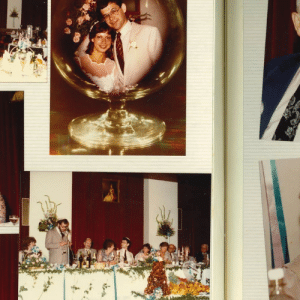Blog
November 16, 2021
Malka Bulkowstein and the Children’s Memorial
Remembering Malka
Adek Bulkowstein experienced a loss so great that he was never able to speak of it with anyone: His wife, Lila, and five-year-old daughter, Malka, were both murdered in Treblinka.
The last time Adek saw them was on the Umschlagplatz in the Warsaw ghetto, where thousands of Jews were gathered before being herded onto cattle trains destined for a death camp. Of the more than 800,000 Jews taken to Treblinka, only a few escaped. Adek was one of them.
He later remarried and had a daughter named Mary. The family moved to Australia to start a new life. Like so many other survivors, the memory of his loss was too painful to disclose. Therefore, Mary went much of her life not knowing that her father had another wife or that she’d had a half-sister named Malka.
 Image: Malka Bulkowstein, Poland, 1939. SJM Archives.
Image: Malka Bulkowstein, Poland, 1939. SJM Archives.
Conceiving the Children’s Memorial
When Adek passed away in 1999, the family felt they were now able to break the years of silence.
Inspired by Mary’s desire for her sister, Malka, and all of the other child Holocaust victims to never be forgotten, the Children’s Memorial was established in 2002.
Today, the Memorial is one of the most moving spaces in the Sydney Jewish Museum. It is a sombre place of reflection immortalising the 1.5 million children who were murdered during the Holocaust.
From a small, dark room in the Holocaust exhibition space, the Memorial contains tiles with the names of and photos of those children connected to the Sydney community. Since the opening of the Memorial, nearly 500 names and photographs have been collected.
Each and every name comes with a heartbreaking story.







What’s On Newsletter
Keep up to date on all Museum events and exhibitions.